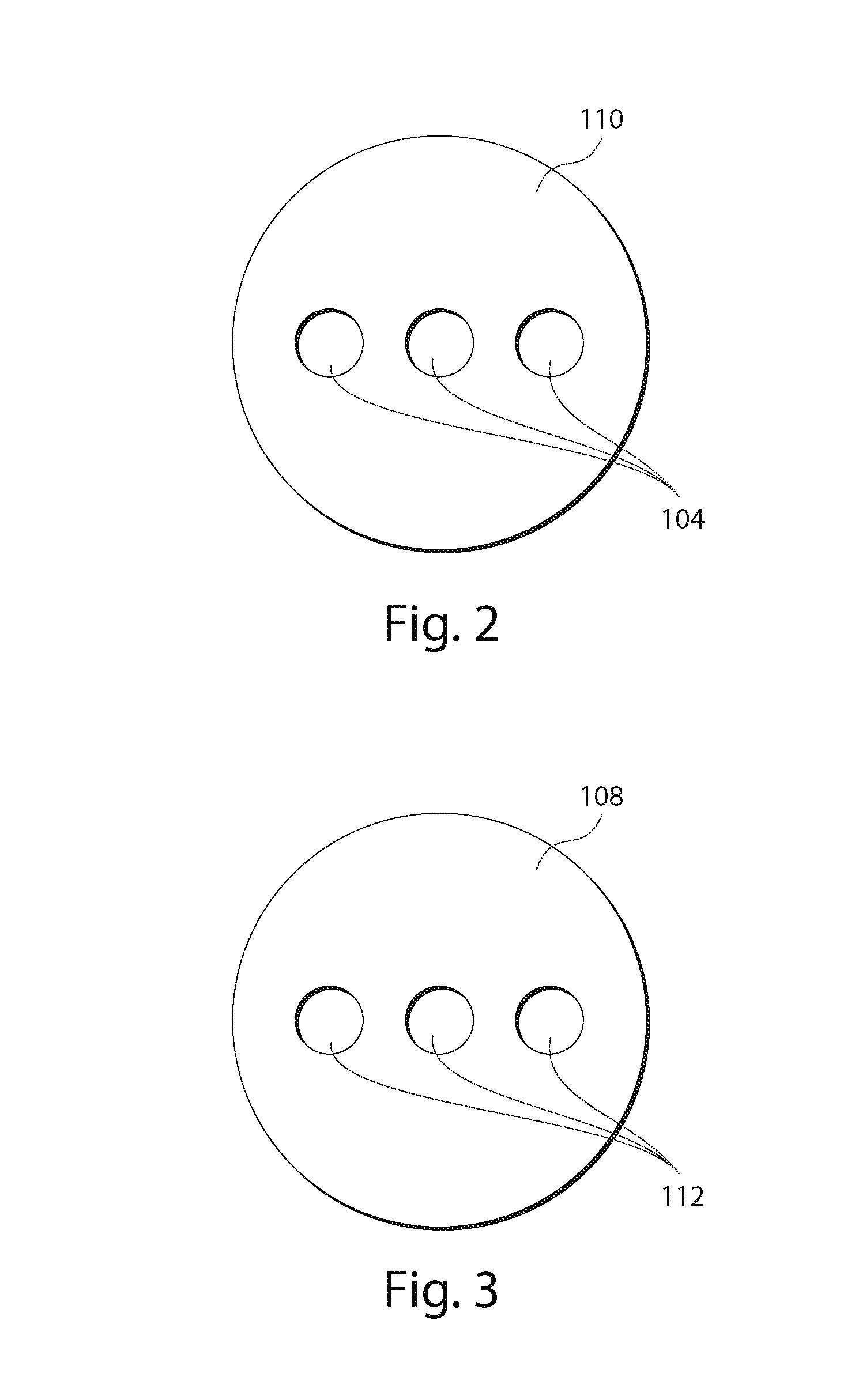Three-channel camera systems with non-collinear apertures
a three-channel camera and non-collinear aperture technology, applied in the field of photography, can solve the problems of object displacement, high cost of multiple camera/lens system, and high computational cost of processing large target feature disparities between one sensor and another,
- Summary
- Abstract
- Description
- Claims
- Application Information
AI Technical Summary
Benefits of technology
Problems solved by technology
Method used
Image
Examples
Embodiment Construction
[0034]It will be understood that the ray traces and lenses depicted in the following figures are for purposes of illustration only, and depict optical paths generally in the disclosed systems. The ray traces and lens shapes should not be understood to limit the scope of the invention in any sense including the magnitude, direction, or focus of light rays or bundles passing through various optical components, notwithstanding any variations in number, direction, shape, position or size thereof, except as expressly indicated in the following detailed description.
[0035]Referring to FIG. 1, a schematic diagram of an imaging system 100 in accordance with one preferred embodiment of the present disclosure is depicted, including various optional components. The imaging system 100 may include a primary optical facility 102, which may be employed in any kind of image processing system. In general, a primary optical facility refers herein to an optical system having one optical channel. Typica...
PUM
 Login to View More
Login to View More Abstract
Description
Claims
Application Information
 Login to View More
Login to View More - R&D
- Intellectual Property
- Life Sciences
- Materials
- Tech Scout
- Unparalleled Data Quality
- Higher Quality Content
- 60% Fewer Hallucinations
Browse by: Latest US Patents, China's latest patents, Technical Efficacy Thesaurus, Application Domain, Technology Topic, Popular Technical Reports.
© 2025 PatSnap. All rights reserved.Legal|Privacy policy|Modern Slavery Act Transparency Statement|Sitemap|About US| Contact US: help@patsnap.com



